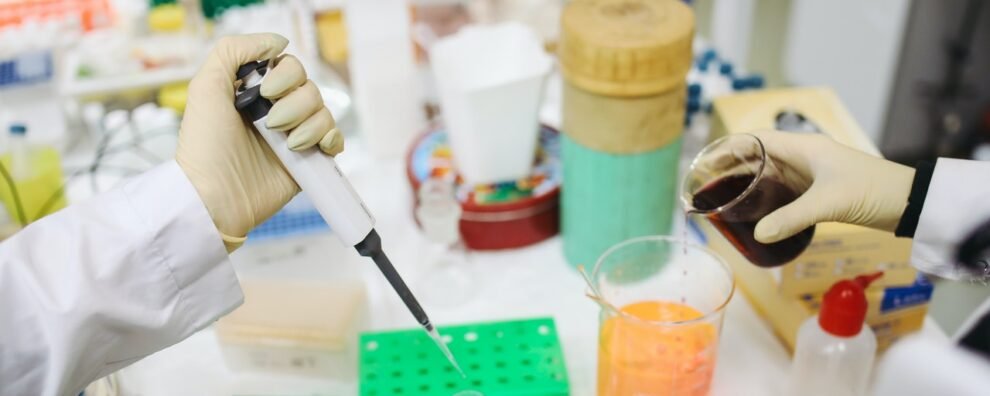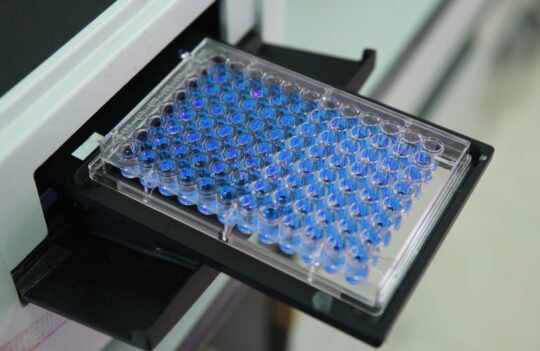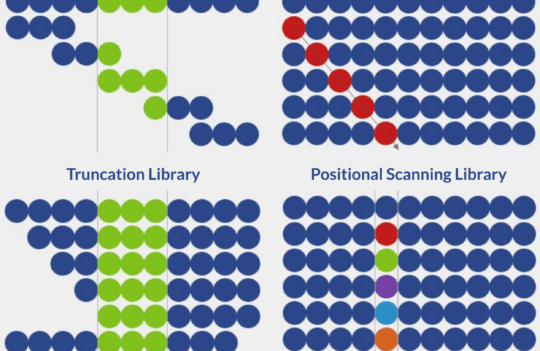 Peptide synthesis
Peptide synthesis
Design and applications of antigenic peptides
Peptides can be defined as fragments of larger functional proteins. They are often designed to mimic a specific biological role, such as the ability to react with a functional binding site of a complementary antibody. This property is known as antigenicity and the resulting molecules are often referred to as antigenic peptides. How are these synthetic peptides designed? And how can they be used for the generation of new antibody treatments?
Immunogenic versus antigenic peptides, what is the difference?
Antigenicity refers to the ability of an antigen to interact with an antibody’s functional binding site, also known as a paratope. Immunogenicity refers to a molecule’s ability to elicit a humoral and/or cellular immune response. The interaction between paratope (antibody) and epitope (antigen) is the fundamental driving force of both immunogenicity and antigenicity. However, it is important to note that while all immunogenic peptides possess antigenicity, not all antigenic peptides possess immunogenicity.
Antigenic peptides tend to be shorter than immunogenic ones, retaining the ability to interact with a paratope but failing to trigger an immune response. Their inability to trigger this response stems from their short and linear structures and, sometimes, from their sequence-wise similarity with host proteins.
Although most applications of immunogenic and antigenic peptides overlap, there are some grounds for differentiation. For instance, immunogenic peptides are, by nature, harder to design and produce because they need not only to possess antigenicity but also to be recognized as foreign by the organism they are administered to.
Making antigenic peptides immunogenic can be achieved by fusion with carrier proteins or virus-like proteins. These strategies have been successfully employed in the production of peptide vaccines or antibody generation applications (hybridoma or polyclonal antibody production).
Antibodies generated by using immunogenic peptides are often called anti-peptide antibodies. These can cross-react with the original intact protein, making them invaluable for isolating, monitoring, and localizing protein expression. On a fundamental level, peptide antibodies can also be used to characterize epitopes in proteins in their native conformation.
Non-immunogenic antigenic peptides, due to their ease of production, remain useful for other applications. For instance, they can serve as ligands to screen highly-diverse antibody libraries using display techniques (e.g., phage display). Moreover, they can be used in protein-protein interaction studies or multiple immunoassays as reagents or standards.
The relationship between structure and antigenicity of peptides
Structure is a crucial property when it comes to peptide antigenicity. The same polypeptide sequence may lead to radically different antigenic reactions in different immunoassays. The reason for these drastic differences stems from the configuration of the peptide itself.
For instance, free peptides in solution are typically linear and fully exposed while peptides adsorbed to a resin or other solid phage are only partially exposed. The latter have a significant portion of their surface unavailable for binding, which tends to limit their antigenicity.
In contrast, peptides conjugated to a carrier may even be more antigenic than free peptides due to the conformation changes induced by the carrier. These peptides often present three-dimensional structures that are better recognized by antibodies.
Another strategy used to successfully increase antigenicity is cyclization. Cyclic peptides have been considered ideal by many experts as therapeutics. Cyclization can increase the stability of peptides, making them more resistant to proteolytic cleavage. Moreover, studies show that it increases membrane permeability, making them better at targeting conventionally “undruggable” disease markers.
Antigenic peptides and mimotopes
Antigenic peptides or epitopes are typically classified as continuous or discontinuous, depending on if the amino acid residues involved in the interaction with the paratope are adjacent to each other or not. In fact, most natural epitopes are discontinuous consisting of residues that are not adjacent in the sequence but instead brought into proximity due to the conformation of the cognate, intact protein.
However, this classification is rarely straightforward. In fact, even within a continuous region, not every residue is in contact with the paratope and these non-interacting residues can often be replaced by any other amino acid without that being detrimental to the peptide’s antigenicity. Moreover, discontinuous peptides are composed of multiple continuous regions separated by non-reactive regions. Without high-quality crystallographic data, it is difficult to classify peptides in terms of epitope-paratope interactions.
The multispecificity of antibodies often gives rise to another kind of antigenic peptide – a mimotope. Mimotopes are similar in terms of structure to an epitope, they elicit an immune response similar to the epitope, but they differ significantly in terms of sequence.
These peptides are typically identified by screening combinatorial peptide libraries or by biopanning via phage display. Both continuous and discontinuous epitopes can have mimotopes with little to no similarity with the original protein. This phenomenon can be explained by the presence of similar atomic groups in key regions of the mimotope. Moreover, a single antibody harbors a number of non-overlapping or only partially overlapping paratopes, each one able to bind to similar or different epitopes.
Mimotopes have several applications ranging from functional and structural research, allergen-specific immunotherapy (in which the harmful epitope is replaced by a structurally similar mimotope), vaccines, and diagnostics, among others.
Concluding remarks
The antigenicity of peptides is a fundamental concept, important to understand not only how these molecules interact with antibodies, but also their potential applications. Over the years, peptides have proved to be highly flexible molecules, easily adapted to answer a plethora of challenges in research, diagnostics, and therapeutic applications.
- Bechtler, C. and Lamers, C. Macrocyclization strategies for cyclic peptides and peptidomimetics. RSC Med Chem. 2021; 12:1325-1351. doi: 10.1039/D1MD00083G
- Van Regenmortel, M. H. Antigenicity and immunogenicity of synthetic peptides. Biologicals. 2001; 29(3-4):209-213. doi: 10.1006/biol.2001.0308




